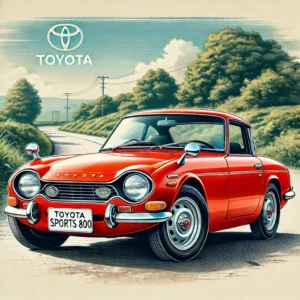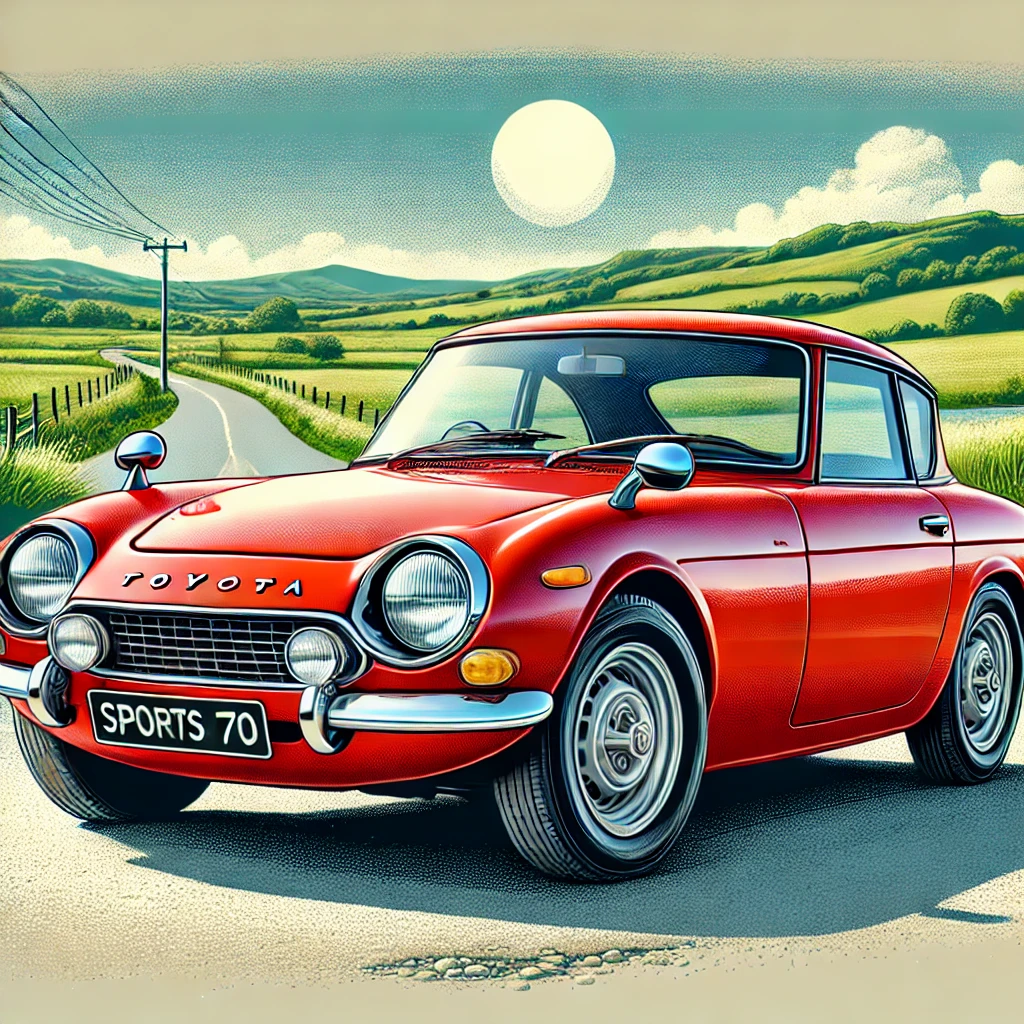The Iconic Toyota Sports 800: Japan’s First Production Sports Car
January 16, 2025

The Toyota Sports 800 holds a special place in automotive history as Japan’s first production sports car. Launched in 1965, this diminutive vehicle combined innovation, efficiency, and charm, setting the stage for Toyota’s future successes in the world of sports cars. Although its production numbers were relatively small, the Toyota Sports 800 remains a celebrated and iconic model, cherished by enthusiasts and collectors alike. In this article, we explore the origins, design, engineering, and enduring legacy of the Toyota Sports 800.
Origins and Development

The story of the Toyota Sports 800 began in the early 1960s, a time when Japan was experiencing rapid economic growth and the automotive industry was booming. Toyota, already a significant player in the market, sought to create a car that would appeal to a younger audience and showcase the company’s engineering prowess. The project aimed to deliver a compact, lightweight sports car that prioritized fuel efficiency without compromising on driving enjoyment.
The development of the Sports 800 was spearheaded by Shozo Sato and Tatsuo Hasegawa. Hasegawa, an aeronautical engineer by training, brought a unique perspective to the project. Drawing inspiration from his experience in designing airplanes, he emphasized lightweight construction and aerodynamic efficiency. The prototype, known as the Publica Sports, debuted at the 1962 Tokyo Motor Show, garnering significant attention and paving the way for the production version.
Design and Styling
The Toyota Sports 800’s design was a departure from the more utilitarian vehicles Toyota was producing at the time. Measuring just 3.58 meters in length and weighing approximately 580 kilograms, the Sports 800 embodied the “less is more” philosophy. Its compact dimensions and sleek lines gave it a sporty yet approachable appearance.
The exterior design was the work of Shozo Sato, who created a timeless look characterized by a long hood, short rear deck, and curved roofline. One of the car’s most distinctive features was its removable targa roof, a precursor to the design seen in later sports cars. This feature allowed drivers to enjoy open-air motoring while maintaining structural rigidity when the roof was in place.
Inside, the Sports 800 offered a minimalist yet functional cabin. Despite its small size, the car provided adequate comfort for two passengers, with supportive bucket seats and a straightforward dashboard layout. The use of lightweight materials, such as aluminum and thin steel, contributed to the car’s overall weight savings.
Engineering and Performance
Under the hood, the Toyota Sports 800 was powered by a modified version of the 2U-B engine, originally developed for the Toyota Publica. This air-cooled, horizontally opposed two-cylinder engine had a displacement of 790 cc and produced 45 horsepower. While these figures might seem modest by today’s standards, the Sports 800’s lightweight construction ensured lively performance and impressive fuel efficiency.
The car’s engine was paired with a four-speed manual transmission, delivering power to the rear wheels. Its top speed was approximately 155 km/h (96 mph), which was respectable for a car of its class during the 1960s. The Sports 800 also featured a double-wishbone suspension at the front and a live axle with leaf springs at the rear, providing a balance between handling and ride comfort.
Another noteworthy aspect of the Sports 800 was its exceptional fuel economy. During a time when fuel efficiency was a critical consideration for many buyers, the car’s ability to achieve over 30 miles per gallon made it a practical choice for sports car enthusiasts.
Production and Variants
The Toyota Sports 800 entered production in April 1965 and was manufactured until 1969. During this period, approximately 3,131 units were produced, making it a rare and sought-after model today. Most of the cars were sold in Japan, although a small number were exported to other markets, including the United States and Southeast Asia.
The majority of Sports 800s featured right-hand drive configurations, but a limited number of left-hand drive models were built to cater to export markets. The car was available in several color combinations, often featuring a two-tone paint scheme that added to its charm.
Over its production run, the Sports 800 saw minor updates and improvements, including enhancements to the engine and interior features. However, its fundamental design and character remained largely unchanged, preserving the essence of the original concept.
Legacy and Influence
While the Toyota Sports 800 was not a commercial blockbuster, its impact on Toyota’s future endeavors in the sports car segment cannot be overstated. The lessons learned from the development and production of the Sports 800 laid the groundwork for subsequent models like the Toyota 2000GT, Celica, Supra, and MR2. These cars would go on to define Toyota’s reputation for producing world-class sports cars.
The Sports 800’s emphasis on lightweight construction, aerodynamics, and fuel efficiency also foreshadowed trends in the automotive industry that continue to resonate today. In an era where manufacturers are striving to reduce emissions and improve efficiency, the principles embodied by the Sports 800 remain highly relevant.
Collectability and Enthusiast Appeal
Today, the Toyota Sports 800 is a highly collectible classic car, revered by enthusiasts for its historical significance and unique character. Its rarity, combined with its role as Japan’s first production sports car, makes it a prized possession for collectors around the world.
Restoring and maintaining a Sports 800 can be a rewarding endeavor, as the car’s simplicity and mechanical robustness make it relatively straightforward to work on. Enthusiast clubs and communities dedicated to the Sports 800 provide valuable resources and support for owners, helping to preserve the legacy of this iconic vehicle.
Conclusion
The Toyota Sports 800 represents a pivotal moment in automotive history, showcasing Toyota’s ability to innovate and push boundaries. As Japan’s first production sports car, it holds a special place in the hearts of enthusiasts and serves as a reminder of the brand’s rich heritage. With its timeless design, engineering ingenuity, and enduring appeal, the Sports 800 continues to inspire admiration and respect more than half a century after its debut. Whether as a collector’s gem or a symbol of automotive progress, the Toyota Sports 800 remains a shining example of what makes sports cars so captivating.